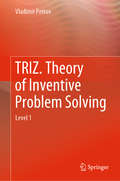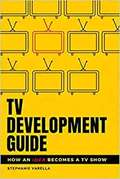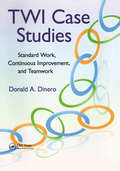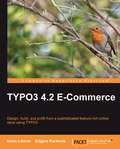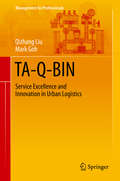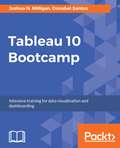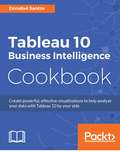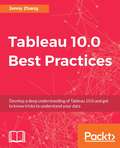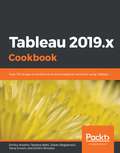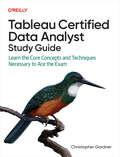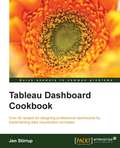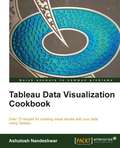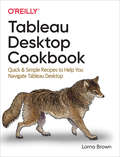- Table View
- List View
TRIZ in Latin America: Case Studies
by Guillermo Cortes RoblesThis book describes the adoption process of TRIZ under challenging conditions and under serious limitations. It presents the integration of TRIZ with other techniques to solve problems in the Latin America industry. The chapters contain some industrial cases that explain the adoption process of TRIZ. They also describe the restrictions or limits on the use and adoption of TRIZ. This book describes a strategy to apply the TRIZ tools for product or service design. Case studies from different universities and enterprises are presented to facilitate the assimilation of the TRIZ concepts and tools.
TRIZ-Anwendertag 2020
by Oliver MayerTRIZ is a valuable tool for inventive problem solving. Based on patent analysis TRIZ enables the faster solution-oriented generation of ideas in fields of technology, organizations, and software. Still TRIZ is not the only way that leads to innovation. There are more tools and each of them has its own pros and cons. Combining them is the key to success. The 1st TRIZ online conference by Bayern Innovativ was born from the TRIZ-Anwendertage. The idea behind is providing a platform that allows to discuss and display TRIZ development in the context of innovation methodology. This book presents papers in German and English language on how TRIZ is related to other tools like Design Thinking, the St. Gallen Business models, etc.
TRIZ-Anwendertag 2022
by Oliver MayerTRIZ is a valuable tool for inventive problem solving. Based on patent analysis TRIZ enables the faster solution-oriented generation of ideas in fields of technology, organizations, and software. TRIZ originated from mainly mechanical problems. But it can be applied very successfully as well for other branches like business, or sustainability or in traffic planning. This enlarged application range offers supplementary value of the tool box TRIZ. The 2nd TRIZ online conference by Bayern Innovativ was born from the TRIZ-Anwendertage. The idea behind is providing a platform that allows to discuss and display TRIZ development in the context of innovation methodology. This book presents papers in English & German language on how TRIZ is related to other tools like Design Thinking, the St. Gallen Business models, etc. and to different areas of application, not only electro-mechanical.
TRIZ-Anwendertag 2024
by Oliver MayerTRIZ is a valuable tool for inventive problem solving. Based on patent analysis TRIZ enables the faster solution-oriented generation of ideas in fields of technology, organizations, and software. TRIZ originated from mainly mechanical problems. But it can be applied very successfully as well for other branches like business, sustainability, with Artificial Intelligence (AI). This enlarged application range offers supplementary value of the toolbox TRIZ. The 3rd TRIZ online conference by Bayern Innovativ was born from the TRIZ-Anwendertage. The idea behind is providing a platform that allows to discuss and display TRIZ development in the context of innovation methodology. This book presents papers in English and German language according to the motto “TRIZ beyond tomorrow: actual trends and visions for the future“. At the TRIZ Conference online, the focus is on new applications, research and extensions of the TRIZ methodology. It is mainly attended by companies, research institutions, colleges, universities and aspirants for TRIZ L4 and L5 who are further developing TRIZ or combining it with other methods and in other areas such as quality assurance, business models, sustainability issues, etc.
TRIZ. Theory of Inventive Problem Solving: Level 1
by Vladimir PetrovThis introductory book describes the initial (first) level of studying the theory of inventive problem solving (TRIZ) from the series “TRIZ from A to Z,” and presents the most general methods for solving inventive problems and generating new ideas. Chapter 1 examines traditional technologies for problem solving, based on trial and error. Chapter 2 describes the general concept of TRIZ, while Chapter 3 explains the main notions of “system” approaches, like system thinking, system and its hierarchy, system effect, emergency, synergetic effect and systematicity. In turn, Chapter 4 describes the notion of “ideality” and Chapter 5 addresses the notion of resources, their types, and methods for using them. Chapter 6 acquaints readers with one of the most important aspects of TRIZ: contradiction. Chapter 7 describes the inventive principles, while Chapter 8 includes descriptions of the systems of trends proposed by G. Altshuller and the author. In closing, the author makes recommendations on how to most effectively use TRIZ tools, on how readers can improve their knowledge, skills and habits concerning the use of TRIZ, and on how they can hone their inventive thinking skills. The book also features Appendices that include analyses of selected problems, a list of the main websites related to TRIZ, and lists of examples, problems, illustrations, tables and formulae.
TSA Baggage: An Inside Look at the Good, the Bad, and the Ugly at America's Airports
by Scott BeckerScott Becker spent over 12 years working for the TSA at Chicago’s O’Hare airport and served it in numerous capacities, from baggage screener to manager. He brings to TSA Baggage a wealth of experience and stories that have something for everyone:•Candid Cameos: Several stories in TSA Baggage feature appearances from celebrities, including Madeleine Albright, Patch Adams, and the Kardashians•Behind-the-Scenes Look: For anyone who’s ever wondered what happens in the parts of airports hidden from a view or during a shift at a security check, this book provides first-hand accounts of the inner workings of airports and the people who keep them humming•Laugh Track: Airports seem to attract the misguided, confused, and weird, and this provides for plenty of laughs, whether its passengers attempting to bring grenades in their luggage or trying to skip through security in a drunken tizzy•Travel Warning: This book can also be a great guide to do’s and don’ts for all future travelers, with tips from someone who’s seen everything that can go right and wrong at an airportTravel brings out the good, bad, and ugly in everyone, and TSA Baggage captures all of it for readers from a first-hand witness to the whole circus. Strap in and get ready for a great read.
TSG Hoffenheim: Football in the Age of Analytics
by Feng Zhu Karim R. Lakhani Kerry Herman Sascha L. SchmidtIn 2015, Dietmar Hopp, owner of Germany's Bundesliga football team TSG Hoffenheim and co-founder of the global enterprise software company SAP, was considering how to ensure long-term sustainability and competitiveness for TSG Hoffenheim. While historically a small team from bottom rungs of the league, TSG Hoffenheim, with revenues of €60 million to €70 million, reached the top division of the Bundesliga in the 2008–2009 season thanks to a deliberate strategy focused on enhanced scouting, strong youth programs, and innovative technology and analytics that improved player development. In 2014 Hopp, who had personally invested €300 million in the club, built a "footbonaut," an automated training environment that collected data on players' skills and strengths. The tool, one of three in the world, helped scouts and coaches better assess and develop each player. Yet some managers felt the technology was a distraction, an investment too expensive for a team that was not yet cash-flow positive. The team finished the 2014–2015 season in eighth place, below the top division, and Hopp wondered whether the focus on technology and analytics was the right strategy to grow the club. He wondered if the "moneyball" approach—when a smaller team competed with wealthier teams by using statistical analysis to buy undervalued assets and sell overvalued assets—could work in football and if investments in technology could lead the team to financial independence.
TSG Hoffenheim: Football in the Age of Analytics (B)
by Feng Zhu Karim R. Lakhani Sascha L. Schmidt Sebastian KoppersIn 2015, Dietmar Hopp, owner of Germany's Bundesliga football team TSG Hoffenheim and co-founder of the global enterprise software company SAP, was considering how to ensure long-term sustainability and competitiveness for TSG Hoffenheim. While historically a small team from bottom rungs of the league, TSG Hoffenheim, with revenues of 60 million to 70 million, reached the top division of the Bundesliga in the 2008-2009 season thanks to a deliberate strategy focused on enhanced scouting, strong youth programs, and innovative technology and analytics that improved player development. In 2014 Hopp, who had personally invested 300 million in the club, built a "footbonaut," an automated training environment that collected data on players' skills and strengths. The tool, one of three in the world, helped scouts and coaches better assess and develop each player. Yet some managers felt the technology was a distraction, an investment too expensive for a team that was not yet cash-flow positive. The team finished the 2014-2015 season in eighth place, below the top division, and Hopp wondered whether the focus on technology and analytics was the right strategy to grow the club. He wondered if the "moneyball" approach-when a smaller team competed with wealthier teams by using statistical analysis to buy undervalued assets and sell overvalued assets-could work in football and if investments in technology could lead the team to financial independence.
TSO-DSO Interactions and Ancillary Services in Electricity Transmission and Distribution Networks: Modeling, Analysis and Case-Studies
by Gianluigi MigliavaccaThis book presents new and practical solutions to solve the coordination problem faced due to the increasing integration of renewable energy sources into existing electricity transmission networks it addresses how the subsequent technological revolution is not only affecting the structure of the electricity markets, but also the interactions between transmission system operators (TSO) and distribution system operators (DSO). A must-have for smart grid analysis, this book presents models and scenario buildups of complex systems and incorporates the experience of three technological pilots that are analyzing special issues connected to network monitoring and control, and participation to a would-be ancillary services market from special subjects. The reader will benefit from the experience drawn from SmartNet, a major research project encompassing 22 partners from nine EU countries and including input gathered from a significant number of industrial partners.
TV Development Guide: How an Idea Becomes a TV Show
by Stephanie VarellaThis is THE ONLY BOOK that takes you through the TV Development process and shows how an idea becomes a TV show in Hollywood. The "TV Development Guide: How an Idea Becomes a TV Show" is perfect for anyone thinking about getting into the TV business, just starting out or already in it and looking for some insight and guidance for their projects. It's a step-by step guide to understand the TV business, how TV development works which includes how to develop your idea, script development, pitching, strategies on selling your show, and more. There are also several interviews with top development executives and agents in the industry.
TWA Parts (Abridged)
by V. G. NarayananTransworld Auto Parts had to implement its new strategy flawlessly to survive the auto industry upheaval. The new CEO asked her leadership team to craft strategy maps and balanced scorecards to help each division implement its strategies.
TWI Case Studies: Standard Work, Continuous Improvement, and Teamwork
by Donald A. DineroTWI Case Studies: Standard Work, Continuous Improvement, and Teamwork provides the insight of leading experts to assist in the execution of Training Within Industry (TWI) the game-changing business tool. Presented as a series of case studies from a range of corporations with a variety of products and needs, it illustrates the rebirth of TWI program
TYPO3 4.2 E-Commerce
by Edgars KarlsonsThis is a fast-paced tutorial focusing on creating an online store. It walks in detail through development of a sample website, illustrating each step with screenshots and explanation. The cumbersome and time-consuming task of developing and customizing a TYPO3 e-commerce site will be a smooth sail with this book. If you want to create a captivating online shop using TYPO3 and optimize your profit, this book is for you. Some knowledge of TYPO3, PHP, and TypoScript is required.
Ta-q-bin
by Mark Goh Qizhang LiuThis book reveals the secrets of Yamato Transport's success in maintaining and extending its leadership in Japan's domestic parcel delivery market. It presents six cases that illustrate how Yamato's flagship service, TA-Q-BIN, has evolved since the 1970s to the benefit of consumers, particularly urban dwellers, and how TA-Q-BIN has become an integral part of Japanese daily life. Each of the six unique cases serves as an independent teaching case for undergraduate and graduate students, describing the particular service design, operations management, innovation, supplier management, and social responsibility within the context of an Asian last-mile logistics service provider. The book also includes insightful presentations of the challenges facing supply chain and logistics service providers in Asia, and their innovative responses to these challenges using real-world cases. Besides featuring interviews with Yamato's key stakeholders and their strategic clients, Japan-based and other Asia-Pacific Yamato operational centers make up the field method included in this book, while secondary data is drawn from trade and academic domains. Some of the cases are written in a didactic fashion, with suitable stopping points for students to pause and deliberate over the managerial issues confronting the decisions that Yamato makes during the course of its business and operational strategies. The results are particularly useful to readers interested in how operations and logistics decision-making are practiced in a homogeneous Asian context and in an urban environment. This book is essential reading for undergraduate and MBA students, as well as practitioners in industry.
TaKaDu
by Elie Ofek Matthew PrebleIn December 2012, Amir Peleg, founder and CEO of TaKaDu, reflected on how to position his young firm for the next fiscal year and beyond. The small Israeli startup had developed an innovative software system that used patented algorithms and statistical analysis to detect problems such as leaks, bursts, and faulty equipment within a water utility's infrastructure. Such problems caused significant water and energy loss at many utilities, led to service interruptions for consumers, and were only getting worse as the existing infrastructure aged. Since its founding in 2009, TaKaDu had attracted nine customers from around the world. However, as Peleg and his executive team debated how to allocate funding for the upcoming year, he needed to decide whether to focus on R&D to improve and add to TaKaDu's existing software and become the clear technology leader, or move ahead with its current offering and focus on getting new customers to penetrate the market as quickly as possible before competition intensified. Some in the company called for devoting the bulk of TaKaDu's resources to making the system more easily deployable, as deploying the TaKaDu service with a new customer could take up to two months. Peleg also wondered if the company should continue to pursue sales leads from anywhere in the world, or focus on one geographic market (and if so, what region should he choose)? An Australian water utility had made a public announcement it was accepting bids to implement a smart water network monitoring system and Peleg wanted to discuss if and how aggressively TaKaDu should bid on the contract with his management team. TaKaDu already had one Australian customer, was this the region to focus on?
Table Tactics: How to Play the Game Well
by Harvard Business Review PressThe first challenge in negotiation is to get the other side to the table. After offering methods of getting the ball rolling, this chapter covers ways to relieve tension, agree on an agenda, and set the right tone. The remainder of the chapter focuses on table tactics for the negotiations themselves, including active listening, exploiting complementary interests, packaging options for more favorable deals, and continual evaluation.
Tableau
by Boris ValleeMatrix Capital Management, a long-short equity hedge fund based in Waltham, Massachusetts, is assessing its investment in Tableau, a data visualization company. Tableau, who conducted an IPO a few years ago, has been experiencing substantial growth as it aims at disrupting the business intelligence software market. Matrix's investment management team is attracted by two key features of the tech company: the large addressable market, and the potential to emerge as a leader in this market. However, after hitting an all-time high in the first quarter of 2015, Tableau's share price began trading down, and by September of that year the stock was trading down year-to-date. Matrix's management team wonders whether the recent market volatility presents an opportunity to add to their existing long position. This case highlights a variety of methodologies to valuate a high-growth company in the tech sector, and illustrates the challenge of living up to high market expectations.
Tableau 10 Bootcamp
by Donabel Santos Joshua N. MilliganSharpen your data visualization skills with Tableau 10 Bootcamp. About This Book • Make informed decisions using powerful visualizations in Tableau • Learn effective data storytelling to transform how your business uses ideas • Use this extensive bootcamp that makes you an efficient Tableau user in a short span of time Who This Book Is For This book caters to business, data, and analytics professionals who want to build rich interactive visualizations using Tableau Desktop. Familiarity with previous versions of Tableau will be helpful, but not necessary. What You Will Learn • Complete practical Tableau tasks with each chapter • Build different types of charts in Tableau with ease • Extend data using calculated fields and parameters • Prepare and refine data for analysis • Create engaging and interactive dashboards • Present data effectively using story points In Detail Tableau is a leading visual analytics software that can uncover insights for better and smarter decision making. Tableau has an uncanny ability to beautify your data, compared to other BI tools, which makes it an ideal choice for performing fast and easy visual analysis. Tableau 10 Bootcamp delivers practical learning modules in manageable chunks. Each chunk is delivered in a “day” and each “day” is a productive day. Each day builds your competency in Tableau. You will increase your competency in integrating analytics and forecasting to enhance data analysis during the course of this bootcamp. Each chapter presents core concepts and key takeaways about a topic in Tableau and provides a series of hands-on exercises. In addition to these exercises, at the end of the chapter, you will find self-check quizzes and extra drills to challenge you, to take what you learned to the next level. To summarize, this book will equip you with step-by-step instructions through rigorous tasks, practical callouts, and various real-world examples and assignments to reinforce your understanding of Tableau 10. Style and approach A fast paced book filled with highly-effective real-world examples to help you build new things and help you in solving problems in newer and unseen ways.
Tableau 10 Business Intelligence Cookbook
by Donabel SantosCreate powerful, effective visualizations to help analyze your data with Tableau 10 by your side About This Book * Cook your favorite Tableau 10 business intelligence recipe with the help of this easy-to-follow book * Build beautiful, interactive dashboards and visualizations in Tableau 10 that help you make informed decisions * This rich collection of independent recipes cover everything needed to become an advanced Tableau user and get an edge over other Tableau users Who This Book Is For This book is targeted to business, data, and analytics professionals who want to build rich interactive visualizations using Tableau. Familiarity with previous versions of Tableau would be helpful, but is not necessary. What You Will Learn * Become familiar with the Tableau interface * Build basic to more advanced charts with step-by-step recipes * Use filters, calculated fields, parameters, and actions to add interactivity to charts and dashboards * Prepare and transform data for analysis using Tableau's built-in tools and functions * Create effective and compelling dashboards and story points * Leverage Tableau's mapping capabilities to visualize location and shape data * Integrate analytics and forecasting to enhance data analysis * Get to know tips and tricks to work more quickly and effectively in Tableau * Increase your confidence and competence in creating rich, interactive visualizations in Tableau In Detail Tableau is a software tool that can speed up data analysis through its rich visualization capabilities, and help uncover insights for better and smarter decision making. This book is for the business, technology, data and analytics professionals who use and analyze data and data-driven approaches to support business operations and strategic initiatives in their organizations. This book provides easy-to-follow recipes to get the reader up and running with Tableau 10, and covers basic to advanced use cases and scenarios. The book starts with building basic charts in Tableau and moves on to building more complex charts by incorporating different Tableau features and interactivity components. There is an entire chapter dedicated to dashboard techniques and best practices. A number of recipes specifically for geospatial visualization, analytics, and data preparation are also covered. By the end of this book, you'll have gained confidence and competence to analyze and communicate data and insights more efficiently and effectively by creating compelling interactive charts, dashboards, and stories in Tableau. Style and approach This book is a collection of independent recipes that cover a wide range of options for data visualization on offer with Tableau. With the help of the recipes in this book, you can explore Tableau and pick the business intelligence solution that's best suited for your needs.
Tableau 10.0 Best Practices
by Jenny ZhangDevelop a deep understanding of Tableau 10.0 and get to know tricks to understand your data About This Book • Quickly learn tips, tricks, and best practices about Tableau from Tableau masters • Whether it is data blending or complex calculations, you can solve your problem with ease and confidence; no more searching for a help doc or waiting for support • If you want to quickly master Tableau, then this book is for you Who This Book Is For This book is for Tableau users who have a basic to average understanding of the various features available in Tableau. You'll find this book useful if you spend a lot of time conducting data analysis and visualizations with Tableau. What You Will Learn • Connect to variety of data (cloud and local) and blend it in an efficient way for fast analytics • Advanced calculations such as LOD calculations and Table calculations • See advanced use cases of Parameter, Sorting, and Filters • Get practical tips on how to format dashboards following the Zen of dashboard design • See examples of a variety of visualizations such as cohort analysis, Jitters chart, and multiple small charts • See the new features in Tableau 10—cross data source filter, worksheet as tooltip, cluster, and custom territory In Detail Tableau has emerged as an industry leader in the field of data discovery and business analytic software solutions. While there is a lot of information on how to use the tool, most Tableau users are faced with the challenge on how it can be effectively used to derive meaningful business insights from the uncharted territory of data. This book will give you useful tips from Tableau masters learned from years of experience working with Tableau. You'll start by getting your data into Tableau, move on to generating progressively complex visualizations, and end with finishing touches and packaging your work for distribution. Inside you will learn the exact steps required to solve complex real-life problems. Whether it is data blending or complex calculations, you can solve your problem with ease and confidence; no more searching for Help doc or waiting for support. This book will help you make the most of Tableau and become a Tableau expert. Style and approach The book will show you hacks to solve complex real-life problems. This book will help you make the most of Tableau and become a Tableau expert. This book is packed with lots of real-life problems with step-by-step instructions from Tableau experts.
Tableau 2018.1 Cookbook: Over 115 recipes to build end-to-end analytical solutions using Tableau
by Dmitry Anoshin Teodora Matic Slaven Bogdanovic Tania Lincoln Kunal AroraThis book is for data analysts, data visualization and BI users who are looking for quick solutions to common and not-so-common problems faced while using Tableau. Put each recipe into practice by bringing the latest offerings of Tableau 2018.x to solve real-world analytics and business intelligence challenges. Some understanding of BI concepts and Tableau is required
Tableau Certified Data Analyst Study Guide
by Christopher GardnerIn today's data-driven world, earning the Tableau Certified Data Analyst credential signals your ability to connect, analyze, and communicate insights using one of the industry's leading visualization platforms. This study guide offers practical and comprehensive preparation for the certification exam, with walk-throughs, best practices, vocabulary, and example questions to help you build both confidence and competence in Tableau.Written by Christopher Gardner, business intelligence analyst and lead Tableau developer at the University of Michigan, this guide supports first-time test-takers and seasoned users alike. You'll begin with foundational skills in Tableau Prep Builder and Tableau Desktop—connecting, combining, and preparing data—before progressing to building effective visualizations, performing calculations, and applying advanced tools like level-of-detail expressions, parameters, forecasts, and predictive analytics.Read, manipulate, and prepare data for analysisNavigate Tableau's tools to build impactful visualizationsWrite calculations and functions to enhance your dashboardsShare your work responsibly with secure publishing options
Tableau Dashboard Cookbook
by Jen StirrupThis book follows a stepbystep approach to taking a data source and building up a series of dashboard elements, ultimately resulting in a series of dashboards for your business. Each topic is explained sequentially in the process of creating a dashboard from design to delivery. There are also detailed explanations of the basic and advanced features of Tableau that serve the needs of dashboard artists. If you are a business user or developer who wants to use Tableau to create dashboards that use data visualization theory and techniques, this is the book for you. Whether you are new to Tableau or an expert, with this book you will be able to master data visualization and put it into practice, creating Tableau dashboards that make a difference in your organization.
Tableau Data Visualization Cookbook
by Ashutosh NandeshwarThis Cookbook contains step-by-step instructions for Tableau users to create effective graphics. The book is designed in such a way that you can refer to it chapter by chapter; you can look at the list of recipes and read them in no particular order.You'll gain the most from this book if you have basic understanding of various chart types and of their importance. Knowing when to employ a certain graphic will be equally useful. This book will get you up to speed if you just started using Tableau. You'll find this book useful if you spend a lot of time conducting data analysis and creating reports.
Tableau Desktop Cookbook: Quick & Simple Recipes to Help You Navigate Tableau Desktop
by Lorna BrownWhether you're a beginner just learning how to create data visualizations or a Jedi who's already used Tableau for years, this cookbook has a recipe for everyone. Author Lorna Brown provides more than 100 practical recipes to enhance the way you build Tableau dashboards--and helps you understand your data through the power of Tableau Desktop's interactive datavisualizations.With this cookbook, Tableau beginners will learn hands-on how this unique self-serve tool works, while experienced users will find this book to be an ideal reference guide on how to employ specific techniques. It also links you to online resources and community features, such as Tableau Tip Tuesday and Workout Wednesday. By the time you reach the end, you'll be a competent user of Tableau Desktop.You'll learn how to:Build both basic and complex data visualizations with Tableau DesktopGain hands-on experience with Tableau's latest features, including set and parameter actionsCreate interactive dashboards to support business questionsImprove your analytical skills to enhance the visualizations you've already createdLearn data visualization skills and best practices to help you and your organization




